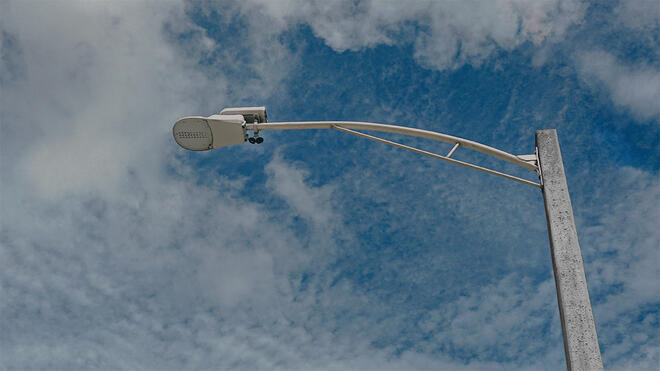Accessing funding for streetlight-based cameras

Our previous blog in this series ran through some of the deployment challenges police departments face when they want to roll out public safety cameras, and how streetlight-based cameras provide a practical and affordable solution. But outside of choosing the right infrastructure, there are still other key deployment questions to answer — a big one being, “How are we going to pay for this?”
The answer is as much about building a business case that partners and government can buy into as it is about choosing flexible and affordable technologies.
Streetlights are platforms for more than just public safety
Streetlights are existing assets that come with built-in power supplies and sometimes even connectivity. That makes them ideal not just for cameras but also for other kinds of smart city applications as well.
A streetlight-based public safety platform that supports multiple use cases is compelling for local governments because it meets multiple departmental needs at once. In addition to safer communities and less crime, municipalities can also benefit from energy savings, asset efficiency, improved public health and generally better quality of life.
That “everybody wins” proposition makes it easier for governments to allocate budget for public safety platforms, especially when compared to the cost of one-off deployments. As we wrote last time, new, standalone poles are expensive to put up and bring clutter to public spaces. They also require their own power supplies. Some solution vendors offer solar-powered cameras to get over that last hurdle, but solar isn’t suited to all environments and can require quite large panels to meet energy demands, making the clutter worse instead of better.
Compared to standalone poles and new construction, a platform approach to streetlight-based cameras can reduce total cost of ownership by 70%.
Getting started is simple with streetlight-based cameras
Another appealing feature of streetlight-based cameras for funders is that the barrier to entry is low. Departments can start small, with a targeted deployment to high-needs areas, and scale up over time as the solution proves its value. There’s no need to take on the cost and commitment of a massive, all-at-once rollout.
Most departments already know where they’d benefit most from an initial deployment of cameras, and what problem they’re most hoping to solve. This will be different for every jurisdiction, so there’s no hard and fast rule about where or how to choose. In one case, it might be a particular roadway that attracts street racers, where license plate recognition (LPR) cameras would bring immediate investigative advantages. In another, it could be a busy bar quarter that gets rowdy on weekends and where assaults and robberies are the main concern. Departments will have a sense of their ‘hot spots’ that most require camera support.
Paving the way to a smarter approach
The reality is that few police departments have their own dedicated IT teams. Even when they do, those teams tend to focus on application support and connectivity. This results in a pattern of buying one-off, single-function solutions for specific problems — leaving departments with a pile of discrete technologies to manage, which adds IT burden and departmental costs. Some may buy solutions that are meant to integrate with others but find they don’t have the expertise to handle the integration themselves.
Vendor-agnostic, multi-functional streetlight-based public safety platforms help overcome many of these challenges. They’re designed to integrate multiple technologies and to provide simple, centralized management. IT teams don’t have to train on a whole host of solutions, because everything can be administered through a single console. And where departments have already paid for technologies, staff training and even full-fledged real-time crime center (RTCC) solutions, they can continue to leverage those prior investments with streetlight-based cameras.
Innovation for the long term
Identifying the broader benefits that public safety platforms provide municipalities can help police departments secure the funding they need to deploy and sustain streetlight-based cameras, and may even expand access to special funds earmarked for public safety initiatives. The easy scalability afforded by streetlights helps ensure that camera projects don’t stall out at the pilot testing stage.
In our next blog, we’ll shift the focus to the hot topic of balancing public safety and personal privacy, with real-world examples of best practices.

